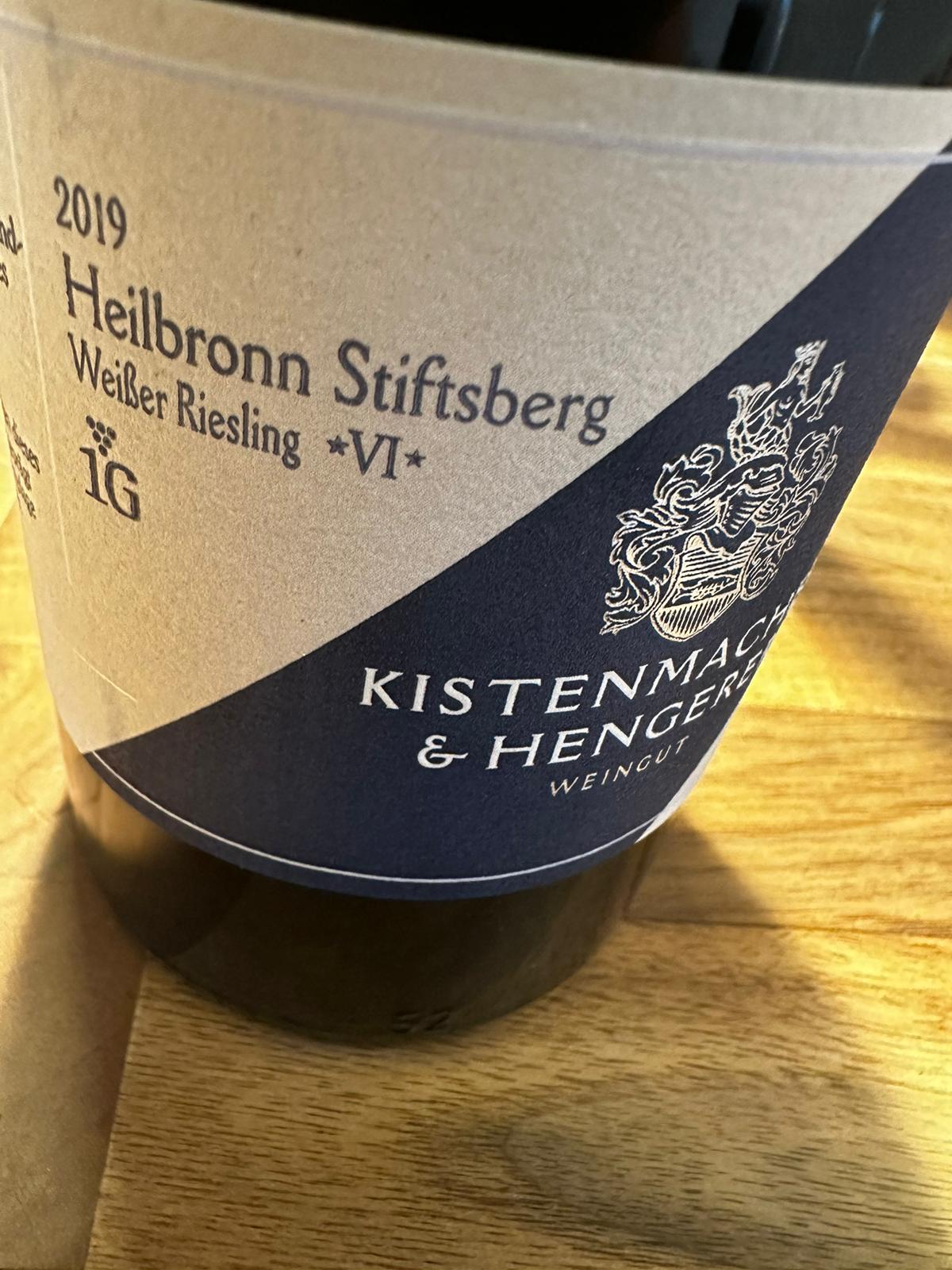- Wine Color/Type
- Top Occasions
- Unique Wines
- Surprise Me!
Game Over? When Nature Reveals Its Power
When we drink aged GG Riesling with loved ones, we might not think about how much vine growers depend on nature. Without nature, vine growers would not be able to produce the wine we enjoy.
A bottle of Weißer Riesling 1G Heilbronn Stiftsberg 2019 (Credit: Lotte Gabrovits)
Hans Hengerer, a well-known winemaker, owner of Kistenmacher-Hengerer in Wuerttemberg, Germany, expressed concern about the changing climate last week. He mentioned that plants are now three weeks ahead in vegetation than usual. But a possible frost might destroy all the work.
Well, the past few days' frosts proved his fears right, since this week, severe frosts have hit important wine regions not only in Wuerttemberg but all over Europe.
The Wrath of Frost: A Harsh Reality
The vineyards were doing well until a sudden drop in temperature caused frost damage in Germany, Austria, France, and Italy. Otto Keller from Baden reported a staggering 99% crop loss at the "Eisinger Berg" vineyard, highlighting the widespread impact.
Understanding Frost Damage
Frost occurs when temperatures drop abruptly, transforming environmental humidity from water to ice. This ice then forms on the vines, effectively "burning" the growing green parts of the plant.
There are two main types of frost. Radiation frost occurs when the weather is calm. Advection frost is caused by cold, strong winds. Despite advancements in meteorological forecasting, frost remains a formidable foe, with no definitive solution to wholly prevent its damage.
Vineyard managers can anticipate and plan for problems by using various strategies to lessen their impact. However, they are often unable to completely shield the vineyard from harm. It is frustrating to anticipate and feel helpless, knowing that despite all efforts, there may still be a significant loss.
Mosel also struck by hail
If frost wasn’t enough, on April 24th parts of the Mosel valley were also struck by hail. Radiation frost generally affects the flatter areas of a region, where the cold air can pool down. This means that the steep slopes of the Mosel valley in Germany were much less affected. However, the hail was not as selective, affecting vineyards that escaped the first hazard.
The Struggle and Strategy of Wine Producers
Wine producers know the risks of their trade. They have to deal with nature and face uncertain outcomes. The recent frost serves as a brutal reminder of this ongoing battle, one that can sometimes feel lost from the start.
Small farmers are struggling because they lack financial support. Bigger farmers have resources like insurance and other businesses to rely on. This puts small farmers at a disadvantage. They are hit hard by this situation.
The Future of Wine Production Amidst Climatic Challenges
As the industry reels from this recent blow, the focus turns to recovery and resilience. What will this vintage yield?
How will producers adapt to increasing climatic unpredictability? These questions linger on. The dialogue is now shifting towards more innovative agricultural practices, enhanced predictive technologies, and perhaps a reevaluation of traditional vineyard management strategies.
Winemaking involves constant risks. Each season brings its own challenges and high stakes. This serves as a clear reminder of the nature of winemaking. Let's remember the strength and creativity of our wine producers as they face challenges with determination.
Stay tuned to Vinovoss.com for continued coverage on this and other significant developments in the wine world.
Lotte Gabrovits
Latest articles

